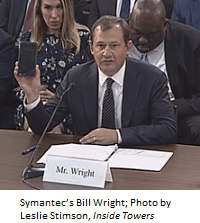
Though 4G LTE is ubiquitously deployed in the U.S., vulnerabilities exist in 2G and 3G mobile networks mainly outside the U.S., said Virginia Tech Professor Dr. Charles Clancy. Public WiFi hotspots here, such as those in coffee shops or airports, are especially vulnerable to cyber threats.
Wireless networks which devices operate over now and that will include IoT devices in the future, need to be secured, said Tenable Chairman/CEO Amit Yoran. Sensor, beacons, senders and receivers need to seamlessly communicate, he said. “Creating rogue access points and intercepting traffic holds just as true for cellular networks and the phone conversations and data that they carry.” Unidentified signal carriers have been around for awhile and have even been “discovered near U.S. military bases,” he emphasized.
“Rogue cellular signals don’t require a massive cell tower or a PhD to create. For $25, you can build one on a cheap, portable and inconspicuous Raspberry Pi,” which is a tiny computer, said Yoran. The experts recommended industry and the government work together to solve the problems and, noting the shortage of cyber security workers now, get students excited about STEM careers at an earlier age.
June 14, 2017




Reader Interactions